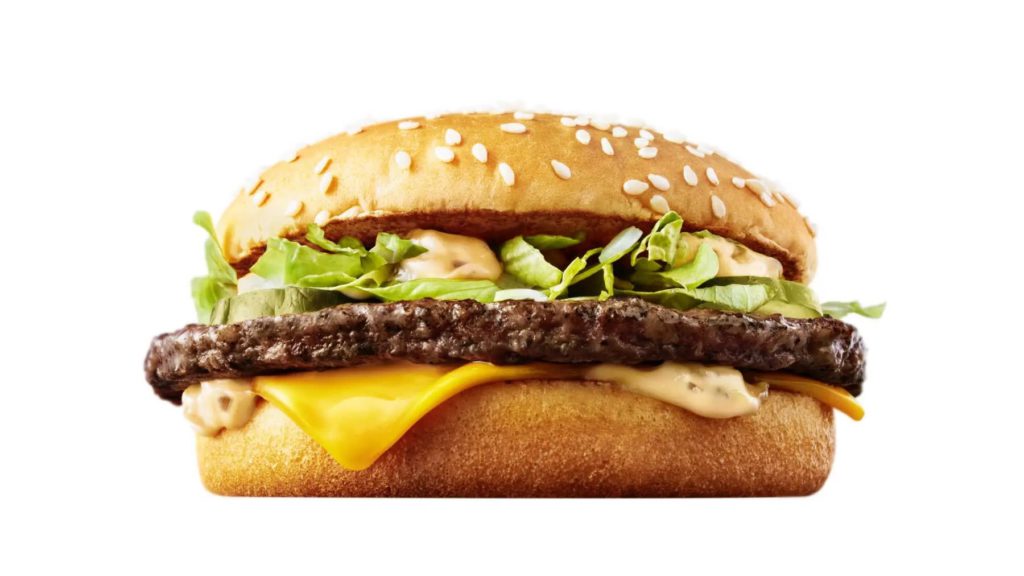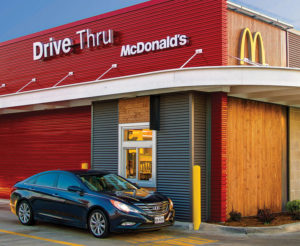Finally, we got on turn in the queue. “Two Big Macs and one Big Data along it, please,” says my colleague nonchalantly. The girl behind the counter is obviously stunned, her glance jumps alternately from one of us to another. She is balancing somewhere between misheard the second part of the order or worried that she had not yet studied the entire menu of the restaurant properly. Then she gently flushes and nods in confirmation. With huge effort we fight back laughter to keep us from revealing.
– – –
 This was a joke that we tried a few years back at one of our McDonald’s visits. Putting Big Mac and Big Data into context was really a prank. How it finally worked out you will find out at the very end of this blog. However, what served to be teasing joke back then is no longer laughable today. Even as straightforward business, as fast-food undoubtedly is, starts to discover the nooks of data analysts and applications of artificial intelligence.
This was a joke that we tried a few years back at one of our McDonald’s visits. Putting Big Mac and Big Data into context was really a prank. How it finally worked out you will find out at the very end of this blog. However, what served to be teasing joke back then is no longer laughable today. Even as straightforward business, as fast-food undoubtedly is, starts to discover the nooks of data analysts and applications of artificial intelligence.
According to WIRED, this fast-food giant has decided to buy Israeli firm Dynamic Yield, which specializes in machine learning algorithms supporting Sales and Customer service. If the bare essence of the message has not raised your eyebrows, I add that this is the biggest acquisition McDonald’s has done over the past 20 years. Backstage expert information suggests that Dynamic Yield price was north $ 300 million, or about 7% of McDonald’s worldwide cash flow or 5% of global annual revenue for the past year! For comparison, it’s about as much as it costs them to build restaurants for all the Scandinavian countries combined. Perhaps, some of you will shake your head: What does McDonald’s sees in artificial intelligence, so that it is willing to “throw” such huge money on it?
McDonald’s seeming data analytics bonanza is a drive-thru process. (…, which is not the focus of sales in most of the Europe, but is an important share of the overall market in the core Western markets. Thus, Big Data might not find immediate use in our region for some month, but in the US it has dire consequences). You may have noticed that most of the offers and promo banners in McDonal’s restaurant chain has lately been transformed into digital displays. This change allows not only to speed up the exchange of new offers for the old ones, but allows also to personalize the offer for a particular customer. Certainly, with standard ordering directly at the counter in the restaurant, it doesn’t make sense because the “personalized” offer would confuse other clients waiting in the queue. But in drive-in it is all possible. So how will it all work?
markets. Thus, Big Data might not find immediate use in our region for some month, but in the US it has dire consequences). You may have noticed that most of the offers and promo banners in McDonal’s restaurant chain has lately been transformed into digital displays. This change allows not only to speed up the exchange of new offers for the old ones, but allows also to personalize the offer for a particular customer. Certainly, with standard ordering directly at the counter in the restaurant, it doesn’t make sense because the “personalized” offer would confuse other clients waiting in the queue. But in drive-in it is all possible. So how will it all work?
Upon approaching the drive-through, their system attempts to recognize which customer it actually is. There are, metter-of-factly already several alternatives to do so: recognizing of car number-plate, beacons fishing for your mobile device, credit card details, or at least unique enough combination of products you order. By identifying (or estimating) your identity, the system will then take advantage of the time you are waiting (for order to fulfill) and by using local weather data, info on nearby events and current menu item popularity of items, you have not spontaneously added to your order, will offer you personalized coupons (which can be turned into purchase extension via one-touch purchase). What is more, if the system recognizes you before placing the order, it can even incorporate factors like duration meal preparation (to match your (in)patience profile), or the relative length of the queue versus the standard you experienced in similar part of the day in past.
– – –
Laughter finally beat us. We had tried our best to stay calm, but when the order tray landed in front of us, we couldn’t stand it anymore and burst into laughter. There were large fries laying besides the two big burgers. We quickly grabbed the burgers, leaving the ordering colleague with long, Big Potatoes instead of lunch. Well, he deserved it, after all. He ordered Big Data few years too early.
Publikované dňa 25. 4. 2019.